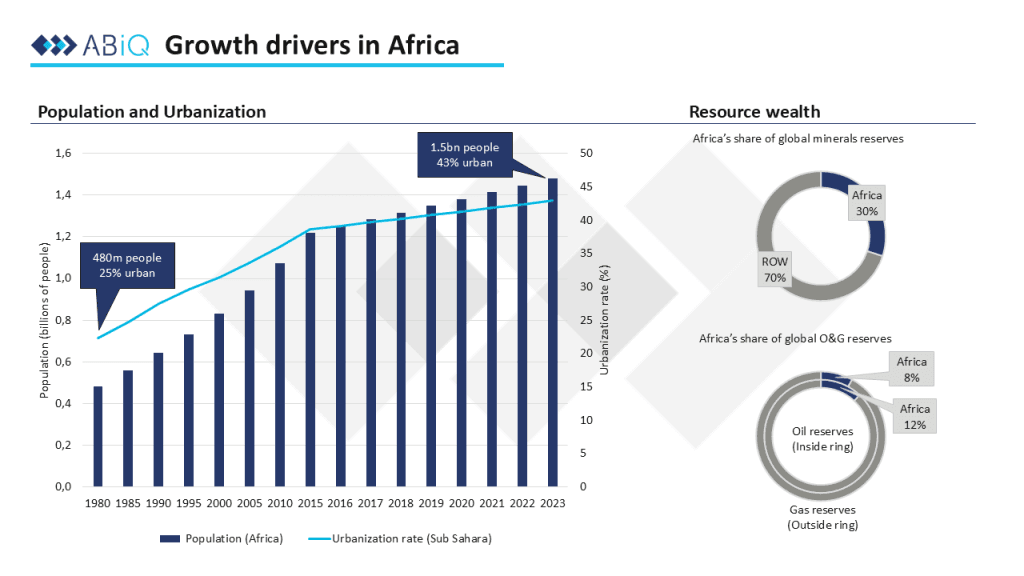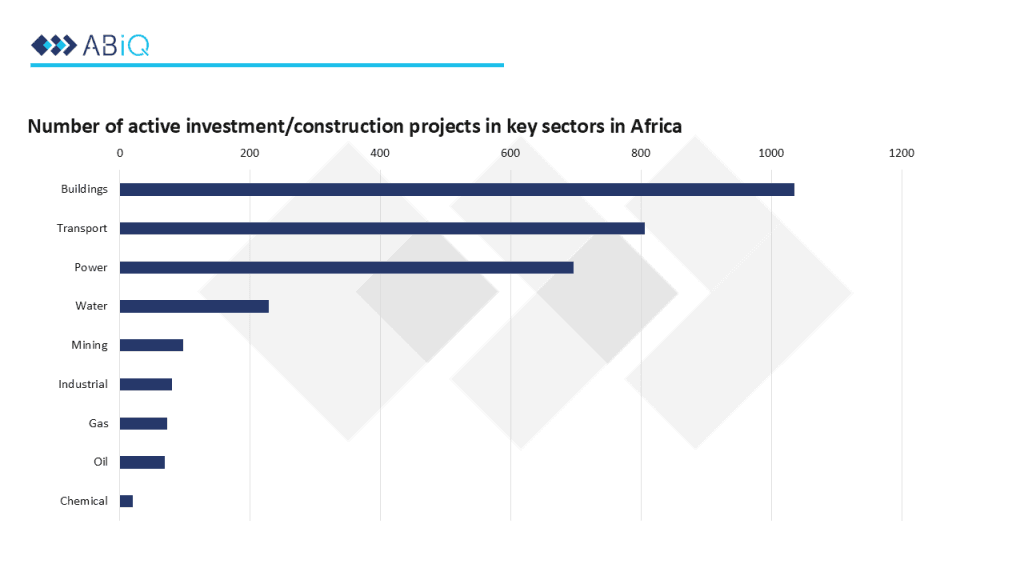Economically, Africa is still small with a total GDP of "only" $2.8 trillion (current USD). In comparison, Asia stands at more than $35 trillion and Europe at about $26 trillion (IMF). However, Africa is growing very quickly. In 2000, Africa’s total GDP stood at $700 billion. By 2024, this number has already quadrupled and is forecasted to grow to $3.8 trillion by 2029 (IMF). This growth is majorly driven by demographic trends such as a growing, young, and increasingly urbanized population, along with Africa’s enormous natural resource wealth.

Aside from the abstract figures regarding economic output, these factors lead to real and tangible project opportunities (i.e., the construction of large physical structures) on the continent. More young people living in urban centers demand the construction of more roads, more schools and universities, more power plants and transmission lines, more hospitals, more housing developments, and many other structures. The exploitation of natural resources results in more mines, the expansion of existing ones, more oil and gas installations, or even the production of hydrogen from Africa's abundant renewable energy sources.

The Difficulty of Project Tracking in Africa
Africa, with an area of 29.6 million square kilometers, is the second-largest continent in the world after Asia (31 million km²) (Worldometers). While this size brings opportunities, it also means that business activity, though growing but still limited, is spread out over a vast area and many different countries. Additionally, data for many countries is often hard to find or unreliable.
Most global suppliers try to cope with this situation through networks of distributors, sometimes combined with a sparse network of small local subsidiaries. While these setups increase the chances of business success, challenges remain: distributor and supplier interests are rarely 100% aligned, and investing in extensive subsidiary networks across many countries is often cost-prohibitive. As a result, few global suppliers have a full grasp of local project opportunities.
Source of the article: ABiQ






